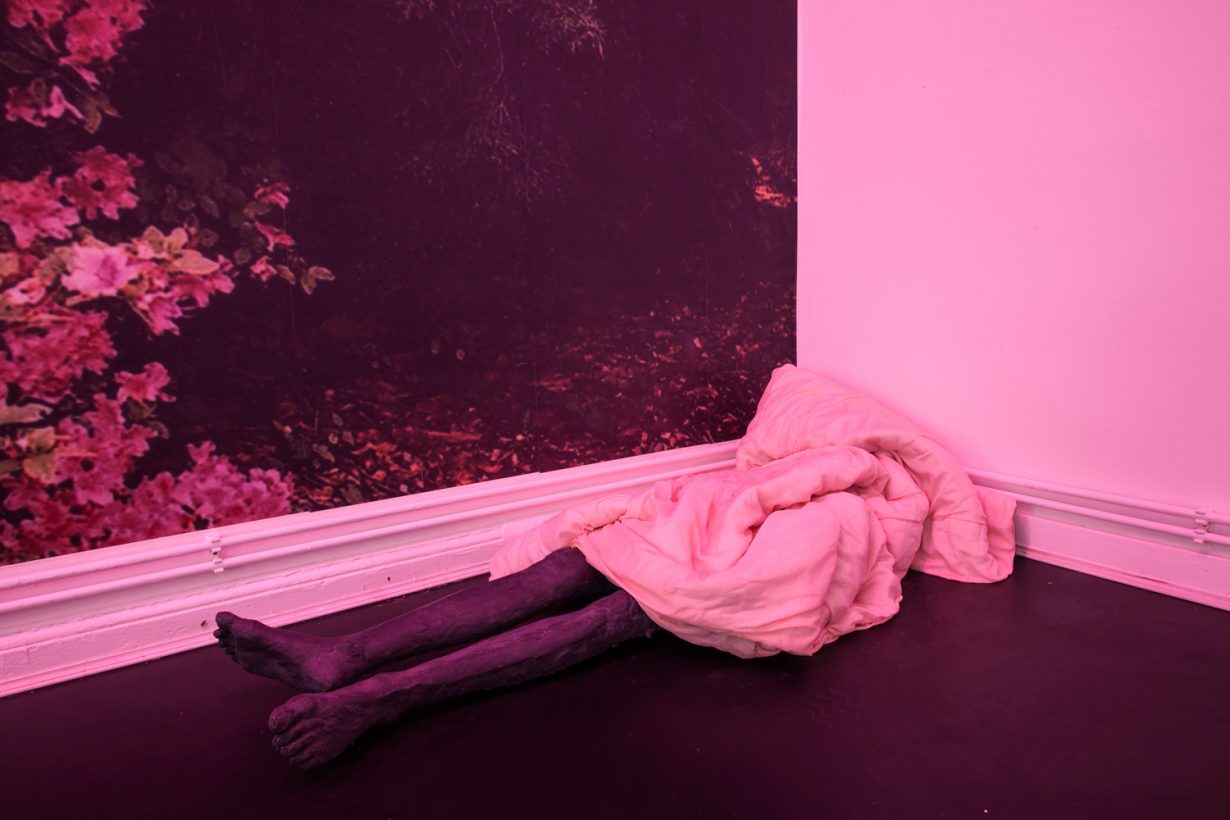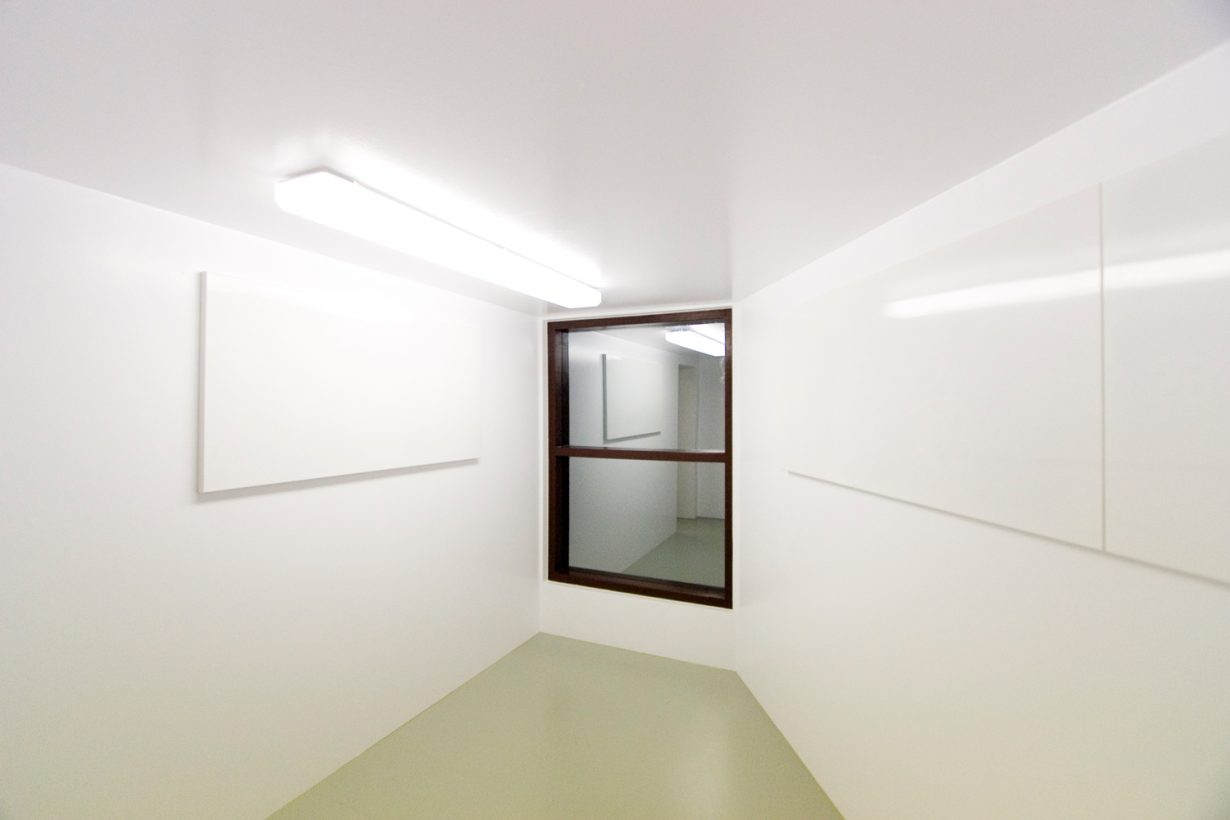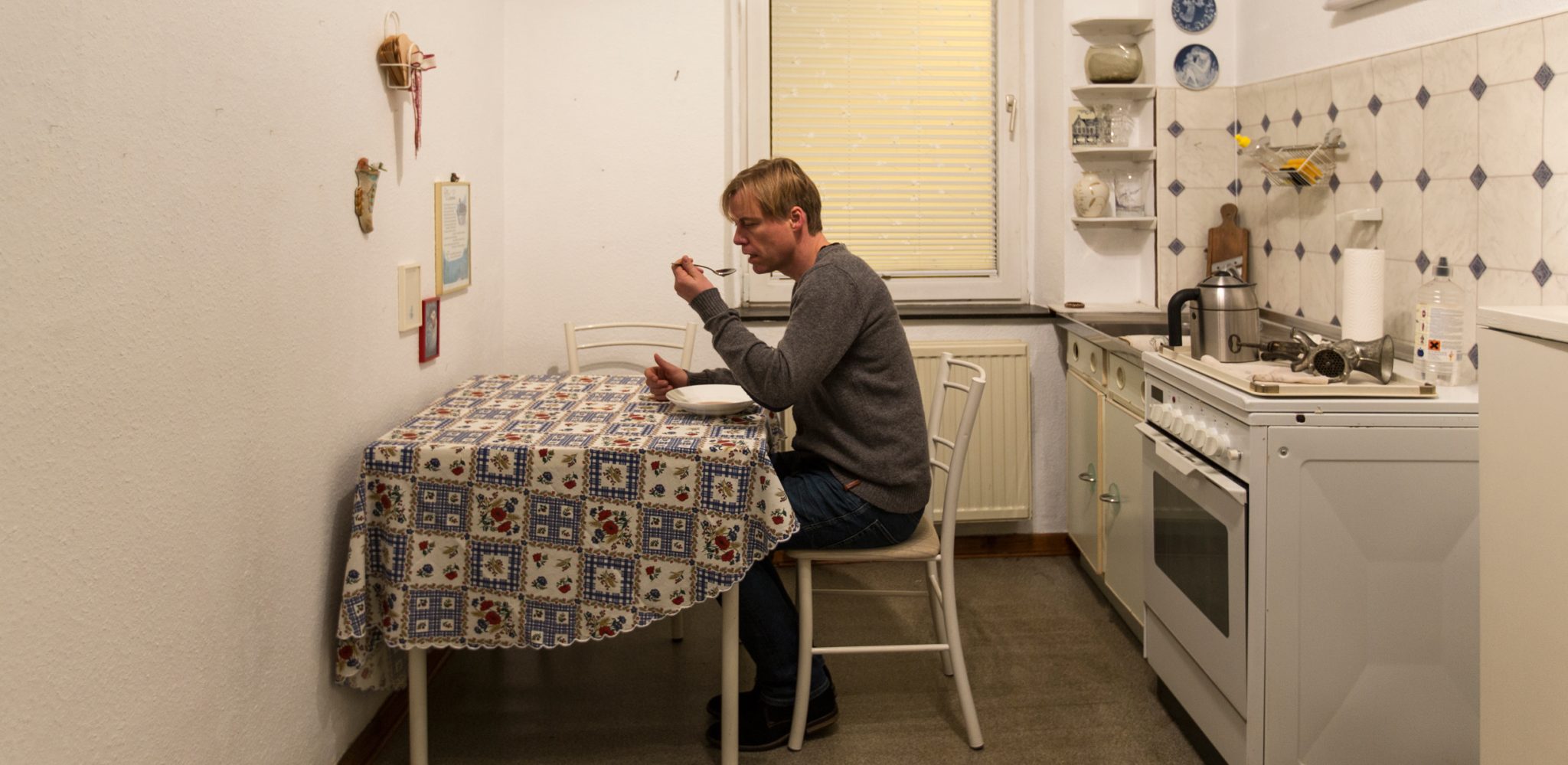Horror cinema is booming; contemporary music is filled with frightfests. But art? Not so much
Midway through Ben Wheatley’s black-and-white horror film A Field in England (2013), which is set during the English Civil War, an alchemist’s assistant is dragged into a tent by a vicious rival of his master. We hear a succession of spine-freezing screams: the subordinate, we’ll discover, is being occultly tortured so as to serve as a human divining rod on a quest for treasure. The victim emerges, plunging across the eponymous haunted field while attached, doglike, to a long rope. He now wears a grotesque grin that signals terminal lunacy. The viewer’s stomach is likely to plunge somewhat, despite the fact that this personality-wipe is something of a genre trope. Wheatley’s film is in an explicit lineage with folk-horror movies including Piers Haggard’s The Blood on Satan’s Claw (1971), in which you see the same kind of hideous rictus on the face of a young woman who has just received an occult visitation in an attic bedroom. The reveal shot that her hand has transformed into – yes – a huge claw is less frightening than her visible yet opaque madness.
The emotional tenor aimed at and achieved in both cases is unbridled dread. Something terrible has happened, or it is insinuated that something of this nature has happened; it signposts worse to come. In the case of Wheatley’s film, the ‘worse’, rather later on, is a mushroom-fuelled, hallucinatory, symmetrical phantasmagoria that all but defies description. I’m not sure I like being in that state of extreme anxiety, but of late – since March, to be precise – it’s felt a fairly honest place to visit, even if the given film’s narrative has nothing to do with pandemics and mass death. Better in fact if it doesn’t: I tried reading Stephen King’s 1978 novel The Stand lately – in which a runaway superflu kills almost everybody in America, leading to the collapse of society and the rise of a totalitarian cult – and it felt a bit too close for comfort. (Host, Rob Savage’s COVID-era 2020 quickie in which a séance conducted via Zoom conjures a murderous demonic presence, feels at first topical then makes you forget current events, which may be a testimony to its efficacy.) Dread is a pitch of feeling that’s subtler, more elusive, more bodily than the rote dynamics of most horror. It’s harder to achieve because it has to commingle violence with an aura of the numinously ominous (different to suspense) and avoid being traceable to, say, the Ligeti-like soundtracks that are the aural lingua franca of contemporary frightfests.

Dread can and often does manifest after some visible statechange, as in the parallel endings of Robert Eggers’s The Witch (2015), where a daughter joins a coven after the death of her entire family, or the long, intermittently shocking runup to the crowning of a young male demon-king at the end of Ari Aster’s Hereditary (2018). Both films, for all their intermittent explosiveness, also deliver a dark, seeping afterburn – ending on the lip of a monstrous, pitch-black apprenticeship – and once they end, or rather stop, you feel like you’ve been somewhere that doesn’t so much diverge from the ongoing terrors of our moment as run on a parallel expressive track.
The horror-movie genre has been booming anew awhile, helped along by flexible auteurs like Wheatley and Aster, and it’s not hard to think of reasons why. Getting shocked is a way out of feeling numbed, if you’re lucky – though it’s a circular process, since in the long term the experience tends to numb you too – but at the same time, and even when it reverts to, say, the seventeenth century, cinema is clearly a seismograph of unshakeable contemporary anxieties. (One time that horror wasn’t particularly big, at least in the West, was during the 1990s, when everything was peachy.) What’s ironic, or maybe just strange, is that if I watch some kind of nerve-shredding movie after a day of looking at contemporary art, I’ll remember that hardly any art at all seems capable of, or willing to, engage with fear as an embodied quality, in an age and at a moment when it’s all around us. The existentialist era, reckoning with the horrors of the Second World War, had – in Britain – the sculptural movement known as ‘the geometry of fear’. Go to a gallery now, when arguably we have rather more to be frightened of – nuclear threats, environmental meltdown, neofascism and now viruses – and the modern version of such productive quivering mostly isn’t there. Contemporary electronic music can access this murky realm: witness, or rather hear, Excavation (2013), by Aster’s preferred soundtrack artist The Haxan Cloak, the aural equivalent of the noose swinging in darkness on its cover, or Boards of Canada’s inexorable Tomorrow’s Harvest (also 2013). Art? Not so much, apparently.

Photo: Trevor Lloyd. Courtesy the artist and Chert Lüdde, Berlin
Dread is rare enough in art, perhaps because it might seem to require theatrical dynamics to achieve it, that it’s an event when it manifests. Last summer, at Berlin’s Chert Lüdde, a show by German artist Heike Kabisch broached the zone: it comprised sculptures of headless bodies, mingled with plastic bags and shredded paper, on filthy mattresses under reddish light – a sort of crepuscular, fearful makeout scene – before segueing into a series of ill-omened photocollages of sculptures whose heads were obscured by ceremonial bowls and giant hands. A viewer felt pressed up against murky ritualism. Casting around for anything it reminded me of – indeed, anything with a similar charge – I could only think of Huma Bhabha’s sculptures, which are nightmarishly distorted, part human and part bestial, and seemingly tugged up from some dank, pained substratum of the mind, and conclude that the dehumanising of the human body is a locus of terror. (Francis Bacon, at his best, conveys the same insight.)
But such primal fear operates not only when you see a body but when you are the body, as in certain constructed environments – as you’ll know if you’ve ever stepped inside a Gregor Schneider installation. Schneider is an outlier in contemporary art for his sheer dedication to constructing sites of trauma: a Guantánamo Bay interrogation room, the birthplace of Joseph Goebbels and most notoriously his own childhood home, which he’s subjected to endless, compulsive room-within-room rearrangement. The impression one has of Schneider as an artist is not of someone playing with thematics so much as working out, of necessity, his own psychological damage. In the process he latches onto atmospheres that seemingly can’t be faked. Something similar might be said of Miroslaw Balka’s more kinaesthetic works, most famously How It Is (2009), the Polish artist’s 30-metre-long, ramped steel box for Tate Modern’s Turbine Hall, a walk from light into enclosing blackness in the company of invisible, shuffling bodies, which perfects a Minimalism of terror in evoking both the Holocaust – the ramp entry to the Warsaw Ghetto, or boxy vehicles destined for the death camps – and the existential dimensions of the extinction waiting for even the luckier of us.

Bodily anxiety is often sparked by waiting, as it were, for the other shoe to drop; it’s why the Paranormal Activity films (2007–), for all their economy, can work well; you spend most of them peering into the corners of rooms on infrared CCTV cameras, wondering if you just saw evidence of a malevolent presence. (As with many things, Bruce Nauman got there first: his multiscreen, night-vision video Mapping the Studio 1: Fat Chance John Cage, 2001, is the Paranormal Activity aesthetic six years in advance, with spooks replaced by rodents.) A pandemic, it turns out, means living in a constant, agitated anticipation of the worst happening: yourself or your family getting sick, perhaps fatally; a news cycle that comprises a rapidly or slowly rising death count; a realisation, in some countries, that people you might expect to protect you have little interest in doing so, might even wish you dead.
Where once one might have turned to art, or culture generally, to be placed in a temporary state of affect, of heightened emotion, the latter has become the daily norm, even monotonously so: a perpetual low, juddering psychic rumble. It remains to be seen how artists will react to such a condition, whether upping the ante of anxiousness, retreating into insularity or other approaches. Speaking only for myself, I think this condition of ubiquitous ambient fear is at the root of my current, near-involuntary gravitation to bracketed, self-authorised trepidation, whether cinematic, sonic or artistic. Whereas once the desired state-change might have shifted from being jaded to being temporarily scared – a move surely traceable to the relatively stultifying (until recently) safety of the modern world – in 2020 one might only move from being scared to being scared differently, because escapism hurts more.
Gregor Schneider’s Tote Räum/Dead Spaces is on show at West Den Haag, The Hague, Netherlands, through 6 December
